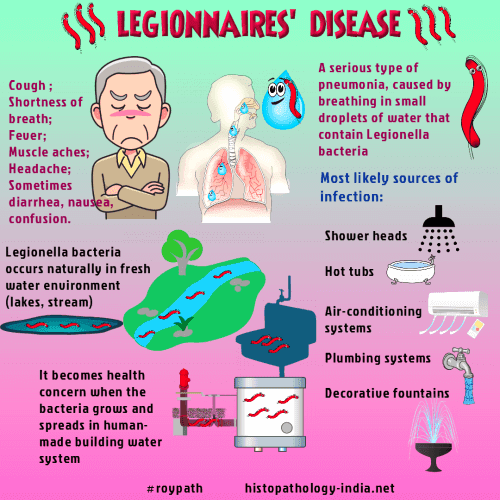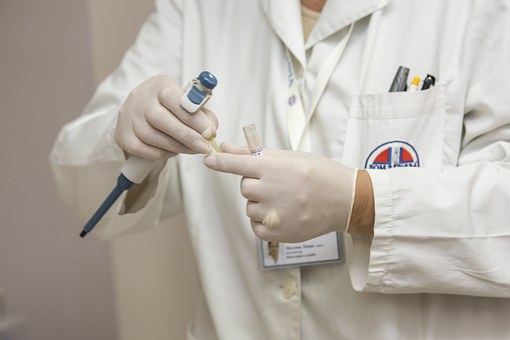Legionella is a type of bacterium found naturally in fresh water sources , like lakes and streams. It can become a health concern when it grows and spreads in human-made building water systems. Legionnaires’ disease (legionellosis). Legionella are commonly found in warm water containing mechanical equipment such as cooling towers, evaporative condensers, air washers, humidifiers, misters, hot water heaters, spas, fountains, car wash facilities and plumbing fixtures. Legionella infect people when they inhale legionella-containing aerosols from these sources.
Common Sources of Legionella infection
- Showerheads and sink faucets
- Cooling towers (structures that contain water and a fan as part of centralized air cooling systems for building or industrial processes)
- Hot tubs that aren’t drained after each use
- Decorative fountains and water features
- Hot water tanks and heaters
- Large plumbing systems
Home and car air-conditioning units do not use water to cool the air, so they are not a risk for Legionella growth.
How It Spreads
After Legionella grows and multiplies in a building water system, water containing Legionella then has to spread in droplets small enough for people to breathe in. People can get Legionnaires’ disease or Pontiac fever when they breathe in small droplets of water in the air that contain the bacteria. Less commonly, people can get sick by aspiration of drinking water containing Legionella. This happens when water accidently goes into the lungs while drinking. People at increased risk of aspiration include those with swallowing difficulties.
In general, people do not spread Legionnaires’ disease and Pontiac fever to other people. However, this may be possible under rare circumstances.
People at Increased Risk
Most healthy people exposed to Legionella do not get sick. People at increased risk of getting sick are:
- People 50 years or older
- Current or former smokers
- People with a chronic lung disease (like chronic obstructive pulmonary disease or emphysema)
- People with weak immune systems or who take drugs that weaken the immune system (like after a transplant operation or chemotherapy)
- People with cancer
- People with underlying illnesses such as diabetes, kidney failure, or liver failure
What is a legionella risk assessment?
There are a lot of myths around legionella, but it should be noted that the bacteria is actually widespread in most natural water sources such as rivers and lakes. However, there are certain circumstances in which man-made water systems can provide the ideal breeding ground for the bacteria. A risk assessment is simply the process of ascertaining if these circumstances are present, resulting in health and safety risks for staff, residents and site visitors.
There are many countries place legal requirements to adhere to when considering legionella control, most of which are outlined in the country’s HSE Code or public health laws. There are plenty of documented examples of organisations failing to comply with the relevant laws and industry regulations, which have resulted in tragic incidents that had serious financial and legal consequences.
What the risk assessment involves
In order to minimise disruption on your business, it’s helpful to do a little work ahead of time to prepare for the legionella risk assessment. This will make sure you have all the necessary information for the assessment itself to go as smoothly as possible. A thorough legionella risk assessment should include the following:
- A documented system overview, including pipework schematics and photographic evidence
- Testing of hot and cold water throughout the building at key points
- Water tank surveys
- Flow and stagnation tests
- Inspection for aerosol formation hazards
- Supply of digital thermometers, records and basic training to your staff
In terms of the water sampling and testing, this simply involves an engineer coming to collect samples from key points around your site which are then securely delivered to a accredited lab for analysis. However, it should be noted that the person carrying out the work needs to ensure it is compliant with established Standards of the country or region.
Who should undertake the assessment?
The risk assessment can be undertaken internally, as stated in the HSE guidelines. This includes any remedial actions and ongoing monitoring and servicing. However, the organisation has a legal obligation to ensure the person conducting the work is sufficiently experienced, skilled, and competent in this area of specialisation. It is of paramount importance to the future of the organisation that the work is carried out as needed. Because, as we’ve seen, the penalties for failing to be compliant – not to mention, putting people’s health and safety at risk – can be huge.
Importance Of Legionella Risk Assessment
Conducting legionella risk assessments to prevent microbiological threats is not only good practice, but is a legal requirement across many industries relying on the use of water systems.The potable water supplies used by oil and gas companies on offshore structures can provide ideal breeding grounds for legionella bacteria, the inhalation of which can have fatal consequences.
In many regions, it is the responsibility of the organisation in control of the premises to ensure that legionella risk assessments have been completed and international businesses may have the added challenge of navigating and honouring varying regional legislation. Safeguarding the health of personnel from microbiological threats is a significant responsibility. Leaving people at risk of exposure is a prosecutable offence, regardless of whether any individuals contract Legionnaires’ disease. Through legionella water testing labs, companies and corporations are able to accurately and routinely check for these bacteria in order to prevent this disease. Aside from endangered human health, the owner or manager of a building or warm water containing equipment where legionella had been found can be faced with liability claims. Developing a legionella water testing plan will provide an early warning if a problem exists with the effectiveness of current legionella control methods. Carrying out routine legionella water testing also enhances the safety of facility staff and occupants.
Legionella Risk Assessment Template
Legionella Risk Assessment Template are used by the Legionella-responsible person to assess the premises of a property. They use this template to record cold and hot water temperatures, check if maintained properly, and evaluate if air conditioning and water systems are clean and disinfected.






